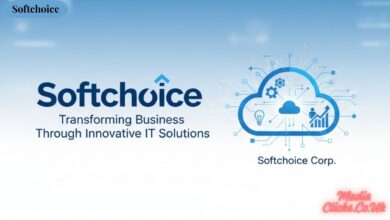Tigo Energy Pioneering Innovation in Solar Power Technology
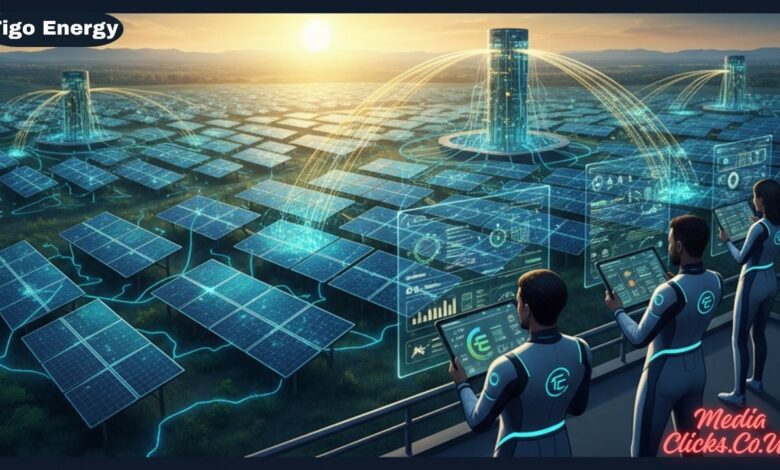
The solar energy industry has witnessed remarkable transformations over the past decade, with companies pushing the boundaries of what’s possible in renewable power generation. Among these innovators, Tigo Energy has emerged as a significant player, bringing fresh perspectives and cutting-edge solutions to the market.
Company Overview
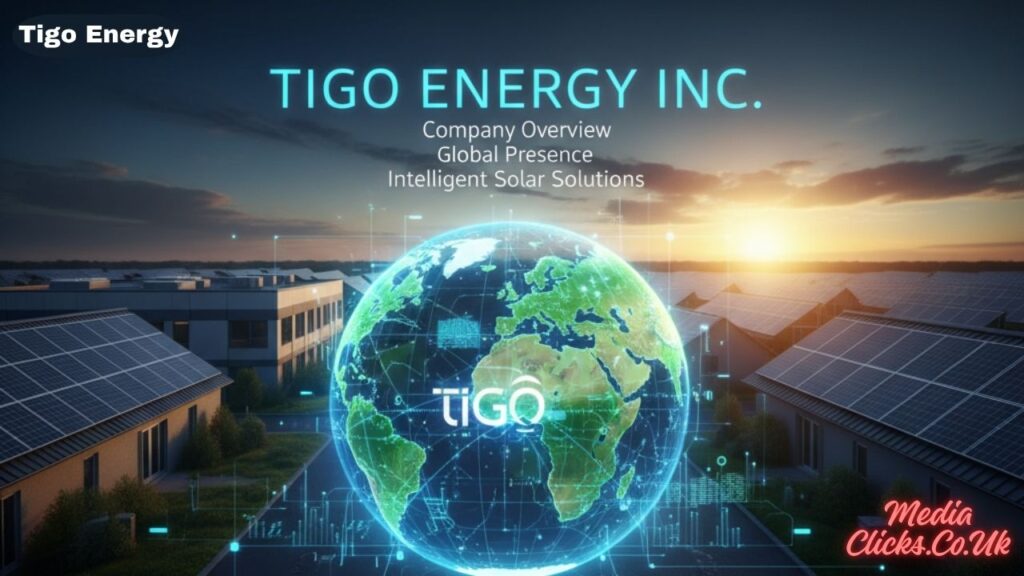
Brief History and Founding
The story of Tigo Energy begins with a vision to make solar power more efficient, accessible, and intelligent. Founded by a team of engineers and renewable energy enthusiasts, the company set out to address fundamental challenges in solar system performance and monitoring. From its early days, the organization focused on developing technology that could maximize energy harvest from every single solar panel, regardless of environmental conditions.
Mission and Core Focus
At its heart, Tigo Energy inc operates with a clear mission: to optimize solar energy systems through intelligent electronics and software solutions. The company believes that every photovoltaic installation deserves the best possible performance, and this philosophy drives everything they create. Their focus extends beyond just hardware—they’re committed to providing comprehensive energy management solutions that empower installers, system owners, and operators with actionable insights.
Position in the Solar Industry
Within the competitive landscape of solar technology, this organization has carved out a distinctive niche. They’ve positioned themselves as specialists in module-level power electronics (MLPE), a crucial segment that bridges the gap between solar panels and inverters. Unlike companies that try to control the entire solar value chain, they’ve chosen to excel in their specific domain, making their products compatible with various system configurations and manufacturer equipment.
Geographic Presence and Markets Served
The company’s reach extends across multiple continents, with a strong presence in North America, Europe, Asia, and Latin America. They serve markets ranging from residential rooftop installations to sprawling commercial projects. This global footprint reflects both the universal appeal of their technology and their commitment to making advanced solar solutions available worldwide. Local partnerships and distribution networks ensure that installers and integrators can access their products and support regardless of location.
Core Technology and Products
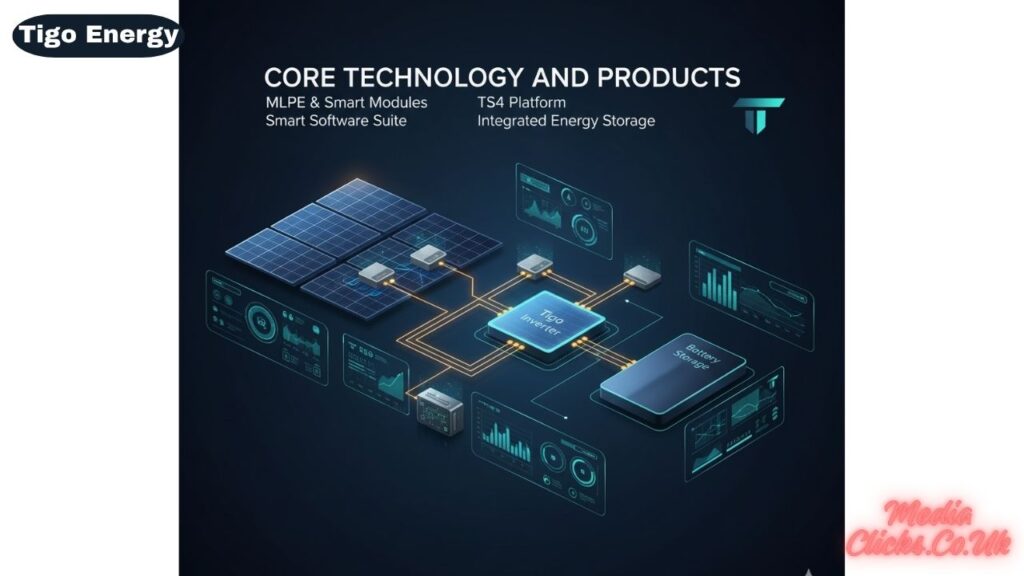
MLPE (Module Level Power Electronics)
The foundation of the company’s offering lies in its sophisticated module-level power electronics. This technology represents a fundamental shift from traditional string-level systems, bringing intelligence and control down to individual solar panels.
TS4 Platform Overview
The TS4 platform serves as the backbone of their product ecosystem. This modular system allows for unprecedented flexibility in solar installations. What makes it particularly innovative is its ability to combine multiple functions—optimization, monitoring, and safety—into compact, reliable units that attach directly to solar modules. The platform’s architecture supports various configurations, letting installers choose exactly which features their specific project requires.
Smart Modules and Optimization
Smart module technology takes solar panels from passive energy generators to intelligent system components. By integrating electronics at the module level, each panel can operate at its maximum power point independently. This means that if one panel experiences shading, soiling, or orientation challenges, it doesn’t drag down the performance of neighboring panels. The optimization happens continuously and automatically, adapting to changing conditions throughout the day.
Rapid Shutdown Capabilities
Safety has become increasingly important in solar installations, particularly with code requirements evolving across different jurisdictions. The rapid shutdown features built into their products address these concerns head-on. When activated, these systems can quickly reduce voltage at the module level, protecting first responders and maintenance personnel. This functionality meets stringent safety standards while maintaining system efficiency during normal operation.
Energy Intelligence Platform
Beyond hardware, the company has developed a comprehensive software ecosystem that transforms raw solar data into actionable intelligence.
SMART Software Suite
The SMART software suite serves as the command center for solar installations. Through intuitive dashboards and interfaces, users can visualize system performance, identify issues, and optimize operations. The platform aggregates data from individual modules, presenting it in ways that make sense for different stakeholders—whether that’s a homeowner checking their daily production or a facility manager overseeing multiple installations.
Monitoring and Analytics Features
Real-time monitoring capabilities provide unprecedented visibility into solar system behavior. Users can track production at the module level, compare actual performance against expected output, and receive alerts when anomalies occur. The analytics go deeper than simple production numbers, offering insights into system health, degradation patterns, and opportunities for improvement. Historical data storage allows for trend analysis, helping predict maintenance needs before problems become critical.
Fleet Management Capabilities
For organizations managing multiple solar installations, fleet management tools become indispensable. The platform enables centralized oversight of diverse systems across different locations. Operators can benchmark performance between sites, allocate resources efficiently, and ensure consistent standards across their entire portfolio. This bird’s-eye view combined with module-level detail creates powerful management capabilities.
Product Categories
The company offers a diverse range of products, each designed to address specific needs within solar installations.
Optimizers
Power optimizers represent the core of their MLPE offering. These compact devices attach to individual solar panels, performing several crucial functions. They track the maximum power point for each module, convert DC power characteristics, and communicate performance data back to the monitoring system. Different optimizer models cater to various panel types, system voltages, and installation requirements.
Inverters
While the company initially focused on optimization technology, they’ve expanded into inverter solutions that work seamlessly with their module-level products. These inverters are designed with compatibility in mind, accepting inputs from optimized modules and converting DC power to grid-compatible AC electricity. The integration between optimizers and inverters creates a cohesive system where both hardware components communicate and coordinate.
Battery Storage Solutions
Recognizing the growing importance of energy storage, the portfolio has expanded to include battery integration capabilities. Their systems can coordinate solar production with battery charging and discharging, maximizing self-consumption and providing backup power capabilities. The intelligence built into their platform extends to storage management, optimizing when to store energy versus when to use it or send it to the grid.
Monitoring Hardware
Beyond the primary power electronics, they offer various monitoring hardware components. These include communication gateways, sensors, and interface devices that ensure reliable data collection and transmission. The monitoring hardware forms the nervous system of the installation, capturing performance metrics and system status information that feeds into the software platform.
Key Features and Benefits
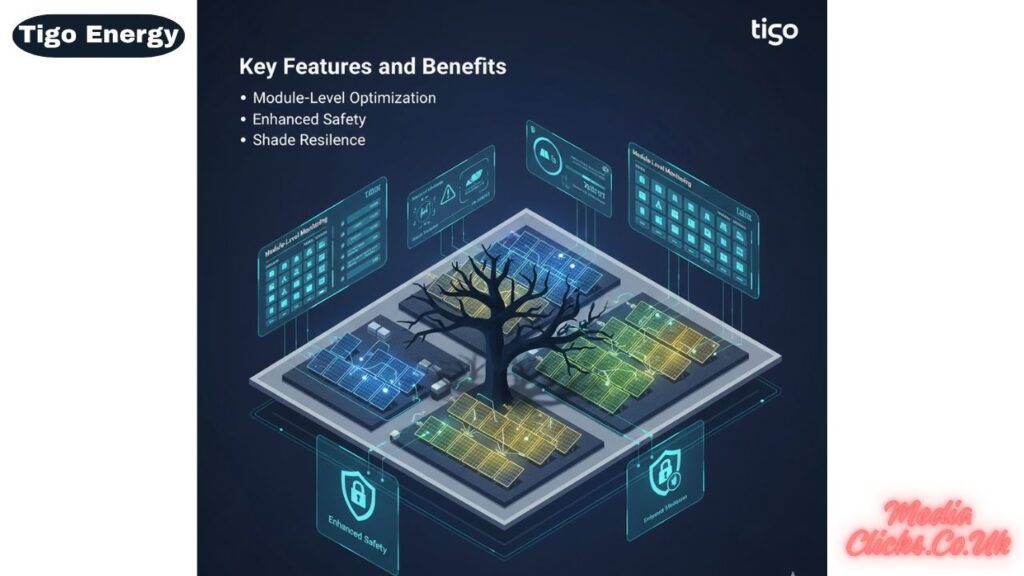
Understanding the practical advantages of this technology helps explain its growing adoption across the solar industry.
Module-Level Monitoring and Optimization
The ability to see and control each panel individually transforms how solar systems perform. Instead of treating an entire string of panels as a single unit, module-level technology recognizes that each panel operates in its own microenvironment. This granular approach means better overall system performance, easier troubleshooting, and more precise understanding of energy production patterns.
Enhanced Safety Features
Modern solar installations must meet rigorous safety standards, and the technology provides multiple layers of protection. Beyond rapid shutdown capabilities, the systems include arc fault detection, ground fault protection, and module-level voltage management. These features protect both the installation itself and the people who work on or near it.
Flexibility in System Design
Traditional string inverter systems impose significant constraints on solar array design. Panels must be oriented identically, face the same direction, and avoid shading. Module-level electronics break these limitations. Installers can work with complex roof geometries, mix different panel types, and design systems that would be impossible or impractical with conventional technology. This flexibility opens up opportunities for installations that might otherwise be rejected as unfeasible.
Performance in Shaded Conditions
Shading represents one of the biggest challenges in solar energy. Even partial shade on a traditional system can dramatically reduce output. With module-level optimization, shaded panels operate independently without impacting their neighbors. A tree branch casting shadow on one corner of an array no longer cripples the entire system. This resilience to shading makes solar viable in locations with unavoidable shade issues.
Retrofit Capabilities for Existing Systems
Not all solar installations are new constructions. Many existing systems suffer from performance issues that could benefit from modern technology. The products are designed with retrofitting in mind, allowing installers to upgrade legacy systems without complete replacement. This extends the useful life of existing investments while bringing older installations up to current performance and safety standards.
Cost Efficiency and ROI
While advanced technology sometimes implies premium pricing, the value proposition centers on total cost of ownership rather than upfront expense alone. Better energy harvest means more electricity production from the same number of panels. Reduced maintenance needs and easier troubleshooting lower operational costs. Extended system life through better management and protection improves long-term returns. When calculated over the system’s lifetime, these factors contribute to compelling economics.
Target Markets and Applications
The versatility of their technology allows it to serve diverse market segments, each with unique requirements and priorities.
Residential Solar Installations
Homeowners represent a significant market for solar technology, and residential installations benefit particularly from module-level solutions. Residential roofs often feature complex geometries, multiple roof planes, and potential shading from trees or neighboring structures. The flexibility and performance optimization capabilities make it possible to maximize production even on challenging residential sites. Homeowners also appreciate the detailed monitoring features, which provide transparency into their investment’s performance.
Commercial Solar Projects
Commercial installations typically involve larger systems with higher stakes for performance and reliability. Businesses invest in solar to reduce operating costs and demonstrate environmental commitment, making system performance crucial. The monitoring and analytics capabilities help facility managers understand their energy profile, while the optimization ensures maximum return on investment. Commercial projects also benefit from the safety features, which align with workplace safety requirements and insurance considerations.
Utility-Scale Applications
At the largest end of the spectrum, utility-scale solar farms present their own set of challenges. These massive installations must operate reliably for decades while maintaining optimal performance. Fleet management tools become essential at this scale, enabling operators to oversee thousands of modules efficiently. Module-level data helps identify underperforming sections, prioritize maintenance activities, and maximize revenue from power production. While utility-scale projects have different economics than residential or commercial installations, the fundamental benefits of optimization and monitoring remain valuable.
Retrofit and Upgrade Markets
Beyond new installations, there’s a substantial market in improving existing solar systems. Many early solar adopters installed systems that, while functional, lack modern monitoring and optimization capabilities. Others have systems experiencing performance degradation or safety concerns. The retrofit market allows these system owners to enhance their installations without starting from scratch, protecting their initial investment while bringing performance up to contemporary standards.
Competitive Landscape
The solar technology sector is intensely competitive, with numerous companies vying for market share across different segments.
Main Competitors
Several established players compete in the MLPE and solar technology space. SolarEdge has built a strong position with integrated optimizer and inverter solutions. Enphase Energy focuses on microinverter technology, offering a different approach to module-level power management. Traditional inverter manufacturers like Fronius, SMA, and others continue to evolve their offerings. Each competitor brings different strengths, technology philosophies, and market strategies.
Unique Differentiators
What sets Tigo Energy apart in this crowded field? Their approach emphasizes flexibility and compatibility. Rather than requiring proprietary inverters or locking customers into a single ecosystem, they’ve designed products that work with various system architectures. This “plays well with others” philosophy appeals to installers and system designers who value choice. Their TS4 platform’s modularity allows users to select exactly the functionality they need, avoiding paying for features that specific projects don’t require.
Market Positioning
The company positions itself as an innovation partner rather than just an equipment supplier. They focus on solving specific problems—making solar work on difficult sites, improving underperforming systems, meeting evolving code requirements—rather than simply selling boxes. This problem-solving orientation resonates with installers and integrators who face real-world challenges on every project.
Competitive Advantages
Several factors work in their favor within the competitive landscape. Their technology’s compatibility with multiple inverter brands provides flexibility that proprietary systems can’t match. The modular platform approach allows for cost-effective solutions tailored to specific needs. Strong relationships with installers and distributors create loyalty beyond just product features. Continuous innovation keeps their offerings current with market demands and regulatory requirements.
Installation and Integration
Theoretical advantages only matter if technology can be implemented effectively in real-world conditions.
Compatibility with Solar Panels
One crucial consideration for any module-level product is how well it works with different solar panels. The products are designed for broad compatibility, supporting panels from numerous manufacturers with varying electrical characteristics. This universality simplifies inventory management for installers and provides flexibility in panel selection for system designers.
Installation Process
Ease of installation directly impacts labor costs and project timelines. The installation process has been refined to be straightforward for trained professionals. Optimizers attach securely to mounting rails or directly to panels, with clear instructions and minimal tools required. Electrical connections use reliable connectors designed for outdoor environments and long-term durability. The company provides training resources and support to help installers become proficient with their products.
Integration with Inverters
Successful MLPE deployment depends on smooth integration between module-level devices and inverters. Their products communicate using industry-standard protocols where possible, ensuring compatibility with various inverter models. The company maintains lists of tested and certified inverter partners, giving installers confidence in their system designs. When paired with compatible inverters, the entire system operates as a coordinated unit rather than disconnected components.
System Design Considerations
Designing a solar system with module-level electronics requires different thinking than traditional string systems. Designers must consider communication infrastructure, ensuring reliable data flow from modules to monitoring systems. Proper grounding and electrical safety remain paramount. The company provides design tools and resources that help engineers and installers create optimized, code-compliant systems efficiently.
Technology Innovation
Standing still means falling behind in the fast-moving renewable energy sector.
Recent Product Developments
The company continues evolving its product portfolio based on market feedback and technological advances. Recent developments have focused on increasing power handling capabilities, improving efficiency, and enhancing communication reliability. New product variants address emerging panel technologies and changing regulatory requirements. Each generation builds on lessons learned from millions of deployed units.
R&D Focus Areas
Looking at their research and development priorities reveals where they see the industry heading. Significant effort goes into improving energy harvest algorithms, making optimization even more effective under various conditions. Communication technology receives attention, ensuring reliable data transmission in challenging RF environments. Integration with energy storage and smart grid technologies represents another key focus area, positioning their products for the evolving energy landscape.
Patents and Intellectual Property
Innovation requires protection, and the company has built a substantial intellectual property portfolio. Their patents cover various aspects of module-level power electronics, optimization algorithms, communication methods, and system architectures. This IP creates competitive moats while also representing potential licensing opportunities. The patent portfolio reflects years of engineering work solving complex technical challenges.
Future Technology Roadmap
While companies understandably keep detailed roadmaps confidential, general directions are apparent. Expect continued improvements in power density, allowing smaller devices to handle higher currents. Enhanced AI and machine learning capabilities will make optimization algorithms smarter. Deeper integration with home energy management systems and grid services will expand the role of solar from simple electricity generation to active grid participation.
Industry Impact and Adoption
Technology’s accurate measure lies in its real-world impact and adoption.
Market Share and Growth
The company has achieved significant penetration in key markets, with millions of units deployed worldwide. While exact market share figures fluctuate and vary by region, they’ve established themselves as a credible player in the MLPE space. Growth trends show continued adoption as awareness of module-level technology benefits spreads among installers and system owners.
Customer Testimonials and Case Studies
Real-world success stories illustrate the technology’s practical value. Installers report being able to take on projects they would have previously declined due to shading or roof complexity. System owners share data showing production improvements compared to expectations or previous systems. Commercial customers highlight the management insights gained from detailed monitoring. These testimonials carry weight because they come from actual installations rather than theoretical modeling.
Industry Partnerships
Success in the solar industry requires collaboration. The company maintains partnerships with panel manufacturers, inverter companies, installation firms, and distributors. These relationships create ecosystems where different companies’ products work together seamlessly. Industry partnerships also provide channels for market feedback, helping guide product development in relevant directions.
Certification and Standards Compliance
Solar technology must meet numerous standards and certifications to be legally installed and operated. Their products carry certifications from recognized testing organizations worldwide, including UL, IEC, and various regional authorities. Compliance with safety codes, grid interconnection requirements, and electromagnetic compatibility standards ensures that installations using their products meet regulatory expectations.
Challenges and Considerations
No technology is without limitations or challenges that must be acknowledged and addressed.
Technical Limitations
While module-level electronics solve many problems, they’re not magic solutions to every challenge. There are physical and practical limits to optimization—you can’t produce power from panels receiving no sunlight, for example. Communication range limitations may require careful planning on very large installations. The electronics themselves must operate in harsh outdoor environments, facing temperature extremes, moisture, and UV exposure that can eventually impact reliability.
Cost Considerations
Module-level technology typically adds cost compared to basic string inverter systems. For some applications—small, unshaded arrays with optimal orientation—the additional expense might not be justified by performance gains. System designers must evaluate whether the benefits outweigh costs for their specific situation. However, as production scales increase and technology matures, cost gaps narrow while functionality improves.
Installation Complexity
Adding module-level devices increases the number of components in a solar installation. Each optimizer must be installed, connected, and commissioned. More components mean more potential points of failure, though reliability engineering aims to minimize this. Installers need training to work effectively with the technology. These factors add some complexity compared to simpler system architectures.
Market Competition
The competitive landscape mentioned earlier also represents a challenge. Other companies are innovating too, developing alternative approaches to similar problems. Market share is never guaranteed, requiring continuous improvement and competitive pricing. Differentiation becomes increasingly difficult as competitors add features and capabilities. Maintaining market position requires ongoing investment in technology, support, and market development.
Future Outlook
Where does the solar technology industry go from here, and what role will module-level electronics play?
Growth Projections
The overall solar market continues expanding as costs decline and climate concerns intensify. Within this growth, module-level technology is gaining adoption share as its benefits become better understood and costs become more competitive. Regulatory trends favoring safety features like rapid shutdown drive additional demand. Energy storage integration creates new opportunities for intelligent power management. These factors point toward continued growth for companies positioned in this space.
Emerging Opportunities
Several trends create new opportunities for their technology. The expansion of solar into previously challenging applications—such as commercial buildings with complex roofs or residential properties with shading—plays to the strengths of module-level systems. Growing interest in solar plus storage solutions requires sophisticated power management that their platforms can provide. Emerging markets where solar adoption is accelerating represent geographic expansion opportunities.
Industry Trends Alignment
Broader energy industry trends align favorably with their technology direction. Distributed energy resources are becoming more important in grid management. Digitalization and IoT are transforming how energy systems are monitored and controlled. Prosumers—consumers who also produce energy—need tools to understand and manage their energy flows. Module-level intelligence, monitoring capabilities, and software platforms position the company well for these trends.
Strategic Direction
While specific strategic plans remain internal, certain directions seem likely based on their technology and market position. Continued enhancement of their software and analytics capabilities will differentiate them as energy management becomes more complex. Deeper integration with storage, electric vehicle charging, and home energy systems will expand their value proposition beyond pure solar optimization. Geographic expansion into high-growth markets will drive volume. Partnerships and ecosystem development will remain crucial for creating comprehensive solutions.
For more information, visit Media Clicks.



